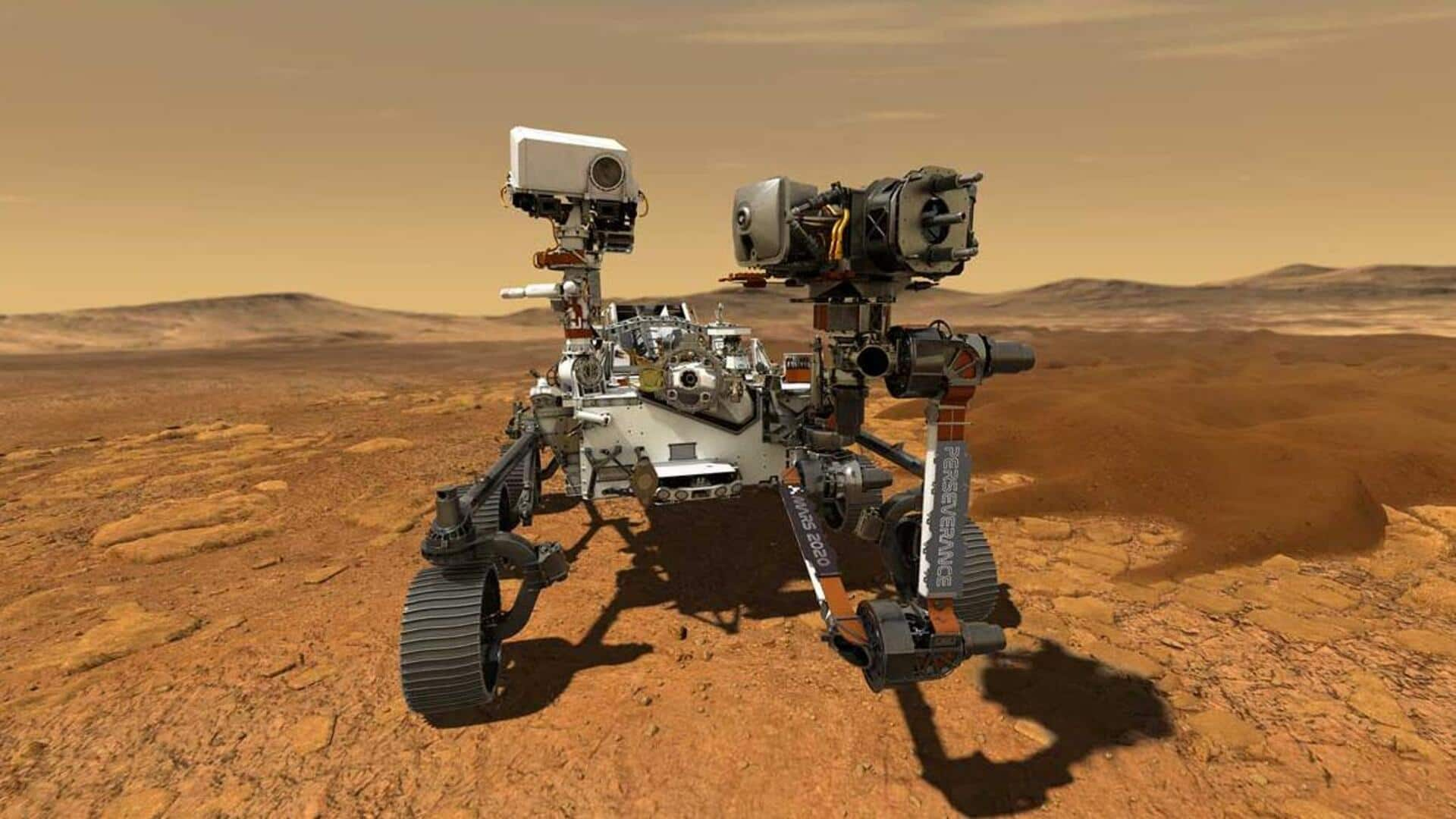
How NASA's Perseverance rover selects samples on Mars
What's the story
In February 2021, NASA's six-wheeled robot, called Perseverance rover, landed on Mars to find out if the now-barren planet ever contained any traces of life. Over the course of time, the rover has picked up several Martian samples, all thanks to observations made by an innovative instrument, called SHERLOC. Let's take a look at how crucial the instrument is.
Context
Why does this story matter?
Perseverance rover's focus is particularly on a region on Mars called Jerezo Crater. This region is believed to have been flooded with water, serving as the perfect spot for collecting samples that could reveal if the Red Planet was ever home to life in its past. We will find out for sure if that's the case when the rover's samples are returned to Earth.
SHERLOC
The instrument is equipped with cameras, spectrometers, and a laser
The SHERLOC instrument, short for Scanning Habitable Environments with Raman and Luminescence for Organics and Chemicals, is mounted on the arm of the Perseverance rover. It helps scientists decide if they have to collect a particular sample from Mars or not. Equipped with cameras, spectrometers, and a laser, SHERLOC looks out for carbon-based molecules that are considered the building blocks of life.
Working
SHERLOC can analyze what rocks are made up of
SHERLOC analyzes the chemical composition of Martian rocks based on how they scatter light. The instrument shoots an ultraviolet laser at the object of interest and studies how that light is absorbed and then emitted—a phenomenon called the Raman effect. In this way, it charts a distinctive "fingerprint" of different molecules, thereby helping understand the composition and origin of the rocks present on Mars.
Information
The instrument's WATSON camera can capture color images
SHERLOC's onboard color camera called WATSON (Wide Angle Topographic Sensor for Operations and Engineering) helps capture the rocky textures of the samples. It adds data to those images to create spatial maps of chemicals on the rock's surface.
Analyzing
Drilled Martian rocks are roughly the size of classroom chalk
It is only after analyzing data from SHERLOC that the mission scientists decide to use the rover to drill out a sample from a Martian rock. Such samples collected from the Martian rocks are about the size of classroom chalk and are stored in the rover's belly. Ultimately, scientists want to pick up specimens that are representative of different areas within the Jezero Crater.
Curiosity
Scientists want to bring Perseverance's samples to Earth
There's another robotic explorer actively probing Mars, called Curiosity rover. This mission has confirmed the presence of organic molecules multiple times in Gale Crater, lying about 3,700km from Perseverance. Curiosity's instrument works by heating up Martian rocks and analyzing the resulting vapor. Since Perseverance's samples could contain preserved signs of life, scientists want to keep the samples intact and bring them back to Earth.
Mars Sample Return
Perseverance's samples will reach here by 2033
Bringing back Martian samples to Earth will allow the scientists to study the specimens in-depth with sophisticated lab equipment, that are too complex to be sent to Mars. As part of the Mars Sample Return Campaign, NASA along with the ESA (European Space Agency), would send spacecraft to collect these sealed samples from Perseverance and return them to Earth around 2033.